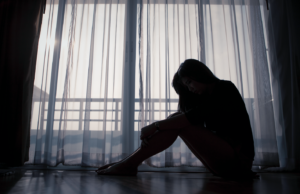
I recently attended an excellent presentation by clinical psychologist, Dr. Hayley Watson on Building Mental Health Resilience in children and teens.
What Are the Barriers to Building Mental Health Resilience?
She explained that stress/overwhelm, perfectionism (in the form of high anxiety or apathy), low self-esteem/negative thoughts, high frustration (aggression/acting out), peer and family challenges all impact one’s ability to be resilient.
Covid has changed our world view, especially for our kids and teens who are still in their formative years. The world doesn’t feel as carefree or safe. During the pandemic, they stayed home more than usual and got less practice with social skills. They felt more isolated, and experienced higher anxiety which led to a desire for more control. Furthermore they spent more time being influenced by online media.
We are always having feelings, thoughts and reactions. Our brain develops patterns. When we’re struggling, we’re caught in a negative pattern. Patterns become more engrained as one gets older, so it’s important to try and change the negative patterns in the early stages.
The TREA Model of Building Mental Health Resilience (Dr. H. Watson)
T = TRIGGER (the soil – the muck).
We try to avoid the hard feelings as it feels as though it’s going to last forever. BUT it’s so important to feel the emotion. Feel the feeling. How does it feel? What colour is it? What shape and texture is it? What are the edges like? Focus on feeling the feeling versus the story that created the feeling. Let go of the thoughts and just feel the feeling. Draw the feeling.
Resilience = your relationship to your feelings without thought
R = REFLECTION (the root)
The more self-reflections we have, the more resilient we are.
It’s okay to be imperfect. What is my pattern? What character do I turn into when I have these feelings? Draw this character.
Resilience = change unhelpful patterns which requires self-awareness
E = EFFORT
Encourage them to try. Encourage them to move forward. We can’t fix it for them. They have to know their own effort is what makes change. Ask, what can you do? How can I support you to face this? What’s a starting point? What’s the smallest step you can take? Let’s do it together. Be a coach, not a rescuer. (A coach is on the sidelines but not in the game.)
Resilience = taking steps forward
A = ACCEPTANCE
Help them accept. We don’t want emotions to dictate what we do. Emotions are not to drive the car. Emotions are impermanent. Emotions don’t have to dictate everything we do.
It’s okay to be just as you are, just where you are. It’s okay to be overwhelmed right now.
Role-model self-acceptance as a practice.
Resilience = being in the moment and accepting
Joy versus “Happiness”
We can’t always feel happy.
Joy is being in the moment fully.
Experience the joyful moments instead of trying to be happy all the time.
What brings you joy? How can you incorporate these moments into your life?
Building Mental Health Resilience In The Midst of Struggle
Notice the trigger – the pattern – talk about yourself first.
What do you feel? (feelings)
What do you need?
What’s one step we/you can take? (effort)
“You’re taking one small step, that’s all any of us can do.” (acceptance)
When Your Child or Teen Feels Insecure and Low Self-Esteem
- Shift the dialogue with the survival part of the brain, by looking for evidence that focuses on a more positive perspective
- Feel the insecurity. Where are they getting this idea of what they need to look like or act like? When do they like or love themselves? When do they forget about these insecurities?
- To get out of the negative, downward spiral, what can they do physically to self-soothe? nature, exercise, bath, meditation app
- Help normalize this stage of life that is filled with insecurity
- ** Help them see their hidden wisdom of every struggle. If you’re self-aware enough to know you have low self-esteem, that’s hidden wisdom. You get things. You understand the world on a deeper level. We need aware people. This is part of your journey.
- Framing – Everyone is different. Everyone has strengths and struggles. This might be harder for you and you have these strengths…
People bottle up, because they haven’t linked the events. Important to use the TREA method to express, reflect and make sense of experiences.
“Parents are shepherds not engineers.”
As a parent, you do the best to guide, scaffold and support your child but ultimately it is their journey.
Warmly,

Further reading on the protective factors for developing resilience.
Want to Connect?
Subscribe now to receive free weekly parenting tips and inspiration.






